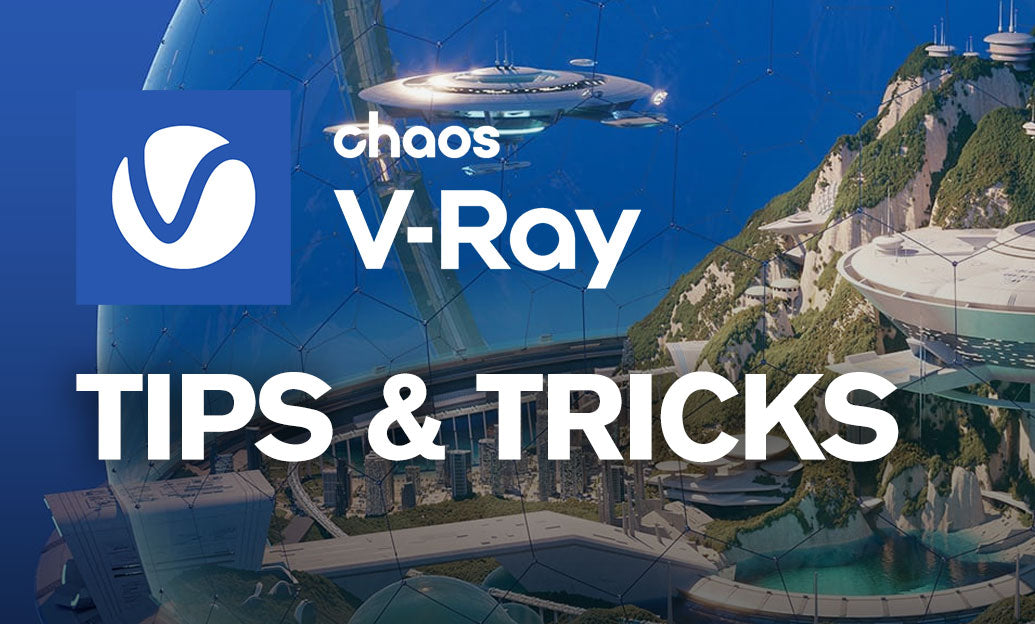Your Cart is Empty
Customer Testimonials
-
"Great customer service. The folks at Novedge were super helpful in navigating a somewhat complicated order including software upgrades and serial numbers in various stages of inactivity. They were friendly and helpful throughout the process.."
Ruben Ruckmark
"Quick & very helpful. We have been using Novedge for years and are very happy with their quick service when we need to make a purchase and excellent support resolving any issues."
Will Woodson
"Scott is the best. He reminds me about subscriptions dates, guides me in the correct direction for updates. He always responds promptly to me. He is literally the reason I continue to work with Novedge and will do so in the future."
Edward Mchugh
"Calvin Lok is “the man”. After my purchase of Sketchup 2021, he called me and provided step-by-step instructions to ease me through difficulties I was having with the setup of my new software."
Mike Borzage
V-Ray Tip: Maximizing V-Ray Render Elements for Advanced Post-Production Control
May 09, 2024 2 min read

Understanding how to effectively integrate V-Ray Render Elements into your post-production workflow can greatly enhance the final output of your renders. Today's tip will provide you with essential insights on leveraging these powerful features to take your renderings to the next level.
- Know Your Render Elements: Familiarize yourself with the different types of Render Elements available in V-Ray, such as Diffuse, Reflection, Refraction, Shadows, and more. Each element captures a specific aspect of your scene, providing granular control in post-production.
- Use Multi Matte Elements: Multi Matte Elements allow you to create masks for your objects, making it easier to adjust individual elements' color, brightness, or contrast without affecting the whole image. This is particularly useful for complex scenes with many components.
- Keep Consistent Naming Conventions: Organize your Render Elements with clear and consistent naming to avoid confusion during post-production. This step is crucial when dealing with numerous elements and layers.
- Optimize Your Workflow with V-Ray’s Frame Buffer: Utilize the V-Ray Frame Buffer's built-in composition tools to preview your Render Elements in real-time. This can save a significant amount of time by reducing the number of test renders needed.
- Separate Your Lights: Use Light Select Render Elements to isolate the contribution of each individual light in your scene. This technique allows for precise lighting adjustments in post, such as balancing light intensities or changing colors.
- Utilize Render Element Presets: Take advantage of presets for common tasks like compositing in Photoshop or preparing for color grading. This can streamline your setup process and ensure you don't miss any critical elements.
- Depth of Field and Motion Blur: For greater control and flexibility, add the Z-Depth and Velocity Render Elements. These allow for non-destructive depth of field and motion blur effects to be applied in post-production, rather than during rendering, saving valuable time.
- Check Compatibility: Ensure that your compositing software supports the Render Elements you plan to use. Some elements may require specific plugins or additional setup within your post-production software.
- Save Disk Space: When rendering out elements, use efficient file formats like EXR which support multiple channels and high dynamic range. This keeps file sizes manageable while retaining maximum image quality.
- Post-Production Integration: When moving into post-production, work in a 32-bit environment whenever possible to maintain the high dynamic range of your elements, which will result in a more realistic composite.
- Test and Iterate: Experiment with different combinations and effects in your compositing software. Sometimes, subtle tweaks to certain elements can make a significant difference in the overall image.
By mastering V-Ray Render Elements, you have the ability to fine-tune your images in ways that would be impossible or time-consuming to achieve within the render engine alone. For the most versatile and efficient post-production process, NOVEDGE offers a variety of V-Ray products to suit your specific needs. Enhance your rendering skill set and create stunning, high-quality images with the flexibility that V-Ray Render Elements provide.
You can find all the V-Ray products on the NOVEDGE web site at this page.
Also in Design News

Cinema 4D Tip: Mastering Graph Editor in Cinema 4D for Precise Animation Control
May 20, 2024 2 min read
Read More
Exploring the Impact of Collaborative Robotics on Design and Manufacturing Processes
May 20, 2024 3 min read
Read More
ZBrush Tip: Mastering Vector Displacement Brushes in ZBrush for Enhanced Surface Detailing
May 19, 2024 2 min read
Read MoreSubscribe
Sign up to get the latest on sales, new releases and more …


